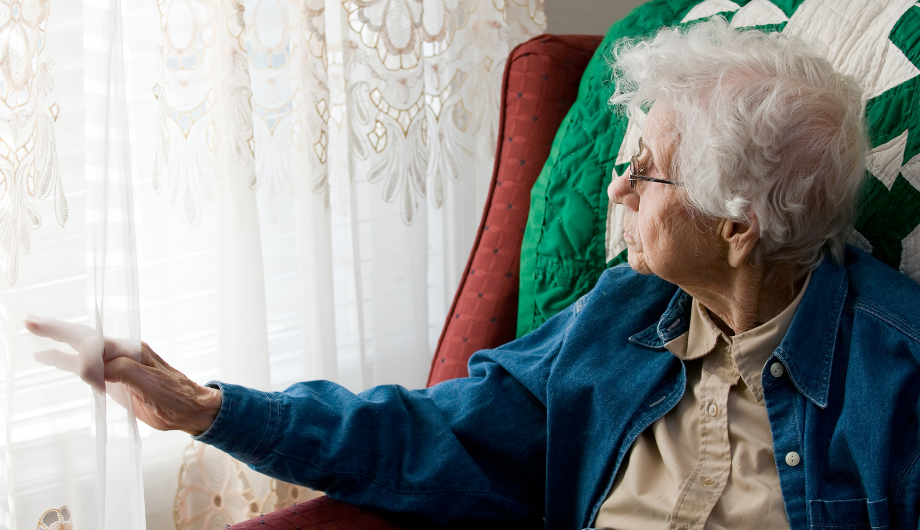
Older people and domestic abuse – completing the jigsaw
Richard Powley is Head of Safeguarding at Age UK. In this thoughtful blog post he takes a look at what can be done to improve the help and support offered to older people experiencing domestic abuse.
How can we help older people living with domestic abuse?
A few weeks ago I was able to do my civic duty by taking part in jury service and, as I first went into the jury waiting room, it became clear that it had been set up for people who would be doing a lot of waiting around. As well as the usual piles of out of date magazines there were tables dotted all around with jigsaw boxes sitting on them.
As a jury we couldn’t speak about the trial when we were in the waiting area. But the jigsaws let us talk to each other, without talking about the case, and they became the subject of intense discussion and competition.
Inevitably, as we came closer to the end of one 2,000 piece behemoth (a Venetian lagoon if you want to know) we began to realise, to our great dismay, that there were some crucial pieces missing.
Looking into the issue of domestic abuse and older people this week, that image of gaps in a jigsaw came back to me. Some of the necessary legislative and operational pieces are in place to empower and protect older victims of domestic abuse, but they are just not joining up to create a coherent whole. The outcomes of this are much, much more serious than an incomplete picture of a picturesque lagoon. They can, in fact, be devastating.
There is no doubt that a more coherent approach is needed. Domestic abuse does not go away with age, and its damaging impact certainly doesn’t lessen. For older people domestic abuse is a hidden issue with hidden victims, and it is not clear that the current law and practice is applied consistently or that it is able to respond effectively to the needs of older people.
So let’s look at a few of the missing pieces in a bit more detail:
Piece #1: Recognition
There is evidence from criminal cases, Domestic Homicide and Serious Case Reviews that domestic abuse issues for older people often go unrecognised, which means that protective or supportive measures that may have reduced the risks of harm are not put in place.
The Domestic Homicide Review for Mrs Y, a 79-year-old woman killed by her husband found that she was not considered to be a potential victim of abuse, due in part to her age. Had the potential signs of domestic abuse been recognised and explored, then it may have been prevented. (Sunderland City Council)
Older people may also be particularly affected by what may be perceived as ‘low level’ individual incidents which can, as part of a longstanding pattern of cumulative abusive behaviour, have consequences that can equal or surpass any individual incident.
Piece #2: Understanding
Specific risk factors for older people, including the development of health needs, retirement from work (resulting in increased contact), stress associated with caring roles and social or geographical isolation may place them at increased risk from domestic abuse. As we age our ability to recover from both mental and physical abuse can be adversely affected, and the impact of domestic abuse can be particularly profound for those who may be reliant on a partner to provide care and financial support.
Additionally, for some older people, there will be factors that may make them less likely to disclose domestic abuse. These include concerns about sharing information considered to be private, and embarrassment and shame about a situation of domestic abuse. Long term undermining of an individual’s self-esteem over many years could intensify these feelings.
Piece #3 Joined up approaches
For older people psychological, financial, physical and sexual abuse may trigger adult safeguarding rather than criminal justice and/or protective domestic abuse processes. It is important that the possibility of domestic abuse is fully considered in adult safeguarding enquiries involving intimate partners or family members. Issues of coercion, pressure and mental capacity also need to be carefully considered. Person centred approaches and the appropriate sharing of information and expertise across safeguarding partnerships will help this to happen.
Consistent inclusion of older people’s needs and insights as part of local Multi-Agency Risk Assessment Conferences and Multi-Agency Public Protection Arrangements could also help to identify and reduce serious risks that may affect older people.
Piece #4 Developing the law
The broadening of the cross-Government definition of domestic violence and abuse is very welcome, as is the new offence of controlling or coercive behaviour in an intimate or family relationship (Serious Crime Act 2015).
However the Serious Crime Act states that these behaviours will be deemed to have had a “serious effect” where the victim either fears that violence will be used against them on “at least two occasions”, OR they have been caused “serious alarm or distress”. This means that controlling or coercive behaviour may not be caught in situations where the abusive behaviour is hidden (e.g. hidden financial abuse) or where, because of cognitive impairment, an individual does not fully appreciate the nature of the behaviour and experience serious alarm or distress. It may help protect those in such circumstances if this were changed to include serious alarm, distress or detriment. (CPS: Controlling or Coercive Behaviour in an Intimate or Family Relationship)
Putting these pieces in place, alongside approaches informed by the experiences and insights of older people, would be a significant step forwards in preventing harm. I warmly welcome the focus of organisations such as Safe Lives on this issue, the more we talk about it, the greater the chance of real progress.
You may be interested in

